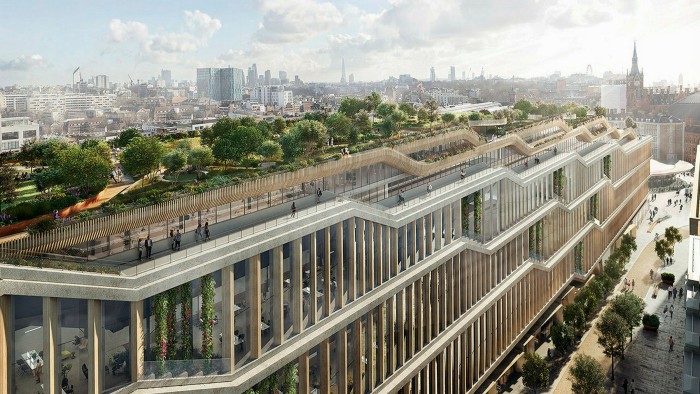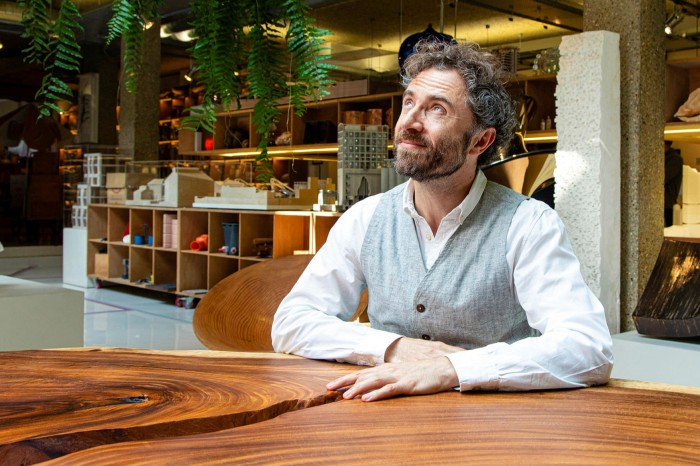What do we mean when we talk about workplace culture?

Roula Khalaf, Editor of the FT, selects her favourite stories in this weekly newsletter.
Workplace culture is a vague term that is most easily described as being an organisation’s “DNA”. It is a short-cut to talk about the way an individual employer functions and the principles it lives by. A healthy internal culture has long been seen as a building block of performance, belonging and success.
As companies head into hybrid working patterns, employers are worried this magic will disintegrate when we are not under the same roof, having dynamic conversations in real life and absorbing the culture.
This belief makes proximity a proxy for culture. It assumes culture lives within the four walls of the workplace and that when we are not physically present, then neither are an organisation’s values. I have written a (pre-pandemic) book about flexible working, and track trends about the future of work. I also run a cultural insight studio — meaning I study global cultural change so brands can stay relevant to customers’ needs. I have always thought the insularity of workplace culture is at odds with the way culture works in the world.
‘Mirror-tocracy’
In the workplace we often hear the words “cultural fit”. People are hired because of this. It means they get the same jokes and share the same cultural references as the leaders. The assumption is if everyone is “on the same page” then businesses can make decisions quickly. This is a “mirror-tocracy”.
A mirror-tocracy means companies create an echo chamber, where there is a lack of diverse voices and experiences. In the long term this is bad for a company’s bottom line, while studies have shown diversity encourages more innovation and better problem-solving.
The word “culture” comes from the Latin colere, meaning to cultivate or grow. Culture is always in motion. It represents the fears and aspirations that shape us and propel us towards how we want to live.
When I study cultural change, one of the principles is that change comes from the margins. If we focus on top-down workplace cultural fit, we forget to listen to the edges. But workplace culture needs to listen to these neglected voices to show us what the future looks like. So how can we do this?
The cultural theory of emergence can provide one answer. Emergent systems, whether they are ant colonies or neighbourhoods, self-organise around principles of bottom-up collaboration and decentralised authority.
One way of doing this is through setting up employee resource groups; groups of workers who join together based on shared identities or life experiences. “The real value of ERGS is creating space to have important conversations and devise solutions that come straight from the source, as opposed to being dictated from the top,” says Abadesi Osunsade, VP of global community and belonging at Brandwatch, a digital consumer insight agency.
Openness is good for people and the business. When Sara Tate started working part-time as the chief executive of TBWA, an advertising agency, she kept her flexible working schedule a secret from clients for fear of appearing less committed. But this hiding “drains your energy and makes you less effective”, she says. Her view is the more of our true selves there are at work, the more original the output and the greater the competitive edge.
Architecture
Buildings also affect our culture — does the architecture of the workplace treat us like drones? “We used to get briefs for buildings which were all about efficiency, treating people like they were nothing more than cogs in a machine,” says the designer Thomas Heatherwick. “But that forgot that we are all intelligent, emotional, sensing beings. The real opportunity now is for workplaces to be temples of the values of each organisation, not just logistically calculated grunt work factories.”

Heatherwick believes we need to move away from identikit corporate monoliths guarded by a large marble reception. He is designing Google’s new King’s Cross building to bring in the culture of the local neighbourhood, lifting the workplace off the ground by two storeys, so in the space underneath people can showcase new ideas and contribute to the area.
Flexibility must also be embedded into our work culture. One lesson from this period is that uncertainty is a given. Now is not the time to nail down a rigid structure of work (say, three or four days in the office), which might not suit the needs of a diverse workforce or the next wave of change.
Data this year from the Behavioural Insights Team, which works with governments and other organisations, revealed the gender impact of imposing a set number of days in the office. Women reduced their working from home days by 8 per cent, adjusting their preferences, but men did not change their preference at all. With a one-size-fits-all approach, only a minority of staff were satisfied with the outcome.
‘Adaptive leadership’
Instead, we should develop what we might call “an adaptive culture”, meaning that managers take time to listen and experiment, invite change from the margins and view culture as a work-in-progress. As Osunsade explains: “Adaptive leadership requires leaders to acknowledge they may never have all the information they need to solve a problem.”
If we believe the future is not settled, we need to lean into looser cultures, which can bend and flex without breaking and might even improve under the pressure of change.
That might mean treating flexible work as an experiment in progress, collecting data on what works and what doesn’t and fine-tuning as you go; creating structures such as reviews that allow you to confront and learn from mistakes; or anticipating a range of possible scenarios for your employees and customers so that you can be responsive if they happen.
The shift to flexible work caused by the pandemic has brought a radical reimagining of how we work. It made the walls between culture “in here” and “out there” porous. One outcome of interacting via our screens is that we’ve seen our colleagues in three-dimensional technicolour: from pets walking across keyboards to kids in the background, our lives are more visible. As Heatherwick puts it: “We’ve glimpsed the real versions of ourselves and the truth of our wonderful messiness.”
The world of work has experienced such a huge shift in the past 18 months, it would be a lost opportunity to sleepwalk back to the old ways without proper thought about the future. That starts with thinking about what workplace culture really is, what it is for and what it looks like.
The writer is author of ‘Flex; Reinventing Work for a Smarter, Happier Life’ and founder of Starling a cultural insights studio.
Comments